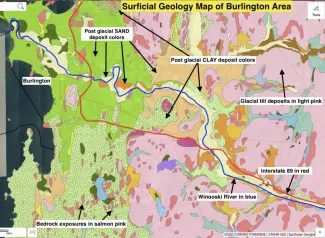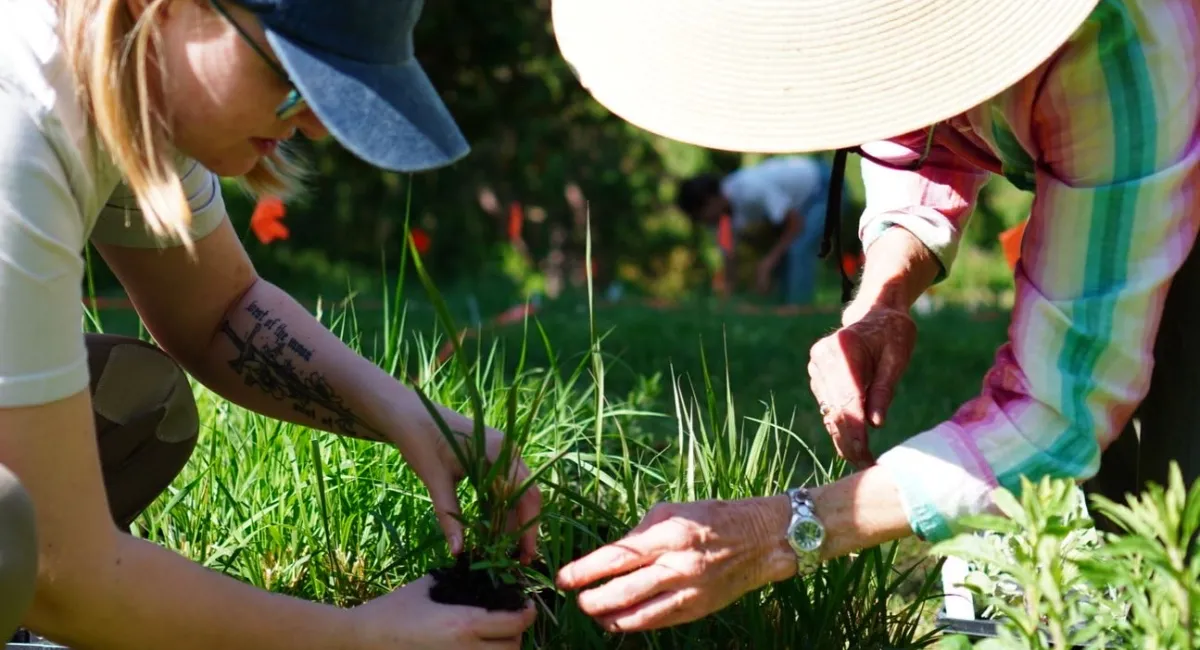If you are interested in continuing your educational journey, we recommend these resources to dig deeper!
Organizations, Books, Newsletters
Educational organizations to learn from and/or support:
- Ecological Landscape Alliance They describe themselves as a “vibrant community of landscape professionals” but everyone is welcome. They share a lot of information via informative articles, events and conferences. Lots to learn here, even without a membership.
- Grow Native Massachusetts A Massachusetts nonprofit that hosts and records their winter Evenings with Experts. Their speakers come from across the Northeast US and their video archive dates back to 2015, all still useful information.
- Homegrown National Park’s - Tallamy’s Hub Entomologist/author Doug Tallamy posts episodic essays. His books, recent articles and many of his lecture recordings are found here, too. The main HNP site is new and growing, though still a work still in progress.
- National Wildlife Federation Their National Wildlife Magazine and newsletters regularly feature informative and timely articles on creating and maintaining natural habitat with native plants to support diverse insects.
- New Directions in the American Landscape Larry Weaner has been organizing annual conferences since 1990 for landscape architects and designers on his science based, ecological approach to landscape design. He views this work as managing succession over time to sustainable native plant communities. Since COVID, he and his staff have brought together top experts for online programming making it even more accessible and year round.
- New Jersey Native Plant Society This is a highly informative website from learning native plants to how to use them successfully in our landscapes. We share most of their native plants and some of their warmer species will be moving northwards; a plant preview.
- Wild Ones They host free webinars and provide popular downloadable Native Garden Plans for different areas of the country designed by professionals. Membership allows access to an informative quarterly journal. One of the oldest nonprofits helping homeowners grow more native plants.
- Wild Seed Project A Maine nonprofit providing helpful info on returning more native plants to our roadsides, cities and yards. Also sells regionally sourced seeds.
- Xerces Society A national organization that has worked on insect conservation at all land management levels from natural areas, range and agricultural acreage (biggest impact!) to urban areas, roadside right-of-ways to yards and gardens with their recent merger with BeeCity USA. They produce multiple useful publications, e.g. Pollinator Friendly Parks.
Books
- Best habitat garden handbook: The Pollinator Victory Garden by Kim Eierman! The author presents an engaging, well-researched summary of everything you need to know to start ecologically gardening and support pollinating insects. Lots of photos and helpful lists and reminders.
- Best book of plant lists for Vermont’s diverse natural communities: Wetland, Woodland, Wildland by Elizabeth Thompson, Eric Sorenson, Robert Zaino. Plants care about their site conditions and as a result tend to live in predictable “collaborations”. Learn more about the natural areas near you, similar to your site, and imitate these relationships in your habitat garden.
- Best guide to restoring natural communities of (edible!) native plants: Wild Plant Culture by Jared Rosenbaum is a well researched and useful source for learning how to “see” a site and its plant communities including site lists of the edible and medicinal plants. In addition to his botanical expertise, he researched indigenous knowledge for the plant bios and his pragmatic site restoration guidance.
- Heather Holm’s books on our native bees, wasps and their preferred native plants:
- Pollinators of Native Plants: Attract, Observe and Identify Pollinators and Beneficial Insects with Native Plants.2014. Her first book and a great starter book to start learning the multiple insect/plant relationships. She’s a great science writer, takes amazing photos, incorporates maps and useful diagrams.
- Bees: An Identification and Native Plant Forage Guide: Includes Tree, Shrub, and Perennial Plant Profiles for the Midwest, Great Lakes, and Northeast Region. 2017. Our copy of this award winning book’s spine is broken from so much use! Learn about nesting strategies, times of year each group of bees is active (usually once a season, some are twice!), and their preferred nectar, pollen and oil plant sources.
- Wasps: Their Biology, Diversity and Role as Beneficial Insects and Pollinators of Native Plants. 2021. To learn about the amazing predatory behaviors of wasps (some species anesthetize prey insects to leave in the individual nest chambers as “fresh food” for each egg!!), read this book with her amazing photos, succinct text, maps, quick guide, tables that track which wasps nectar at which native plants. Fascinating!
Our favorite e-newsletter/blogs
(in addition to those from the educational organizations above)
You can view Grow Wild's newsletter archive here.
- Pulling It All Together:
- The Humane Gardener by author and habitat consultant, Nancy Lawson, zooms in to the tiniest details of plants, wildlife, natural communities or zooms out to frame the larger ecological patterns and relationships. She synthesizes diverse research reports into compelling essays.
- Plant Culture:
- Indigescapes in Ohio specializes in Native Plant Agriculture and has an informative FaceBook site of food plant profiles with a slightly warmer climate focus..
- Rebecca McMackin’s Grow Like Wild newsletter. She’s a hugely engaging speaker, writer and is Director of Horticulture at Brooklyn Bridge Park in NY, though she’s stepping aside for a year to pursue a prestigious Loeb Fellowship at the Harvard University Graduate School of Design.
- Wild Plant Culture blog is written by Jared Rosenbaum, a botanist and ecological restoration practitioner in NJ. He writes informative posts featuring different native plants, especially the edible ones! He also creates engaging short YouTube plant bios, Rooted Plant Videos.
- Insects and Other Wildlife:
- Naturally Curious with Mary Holland. Mary writes periodic short naturalist posts that include a photo. Several help us understand when those “seed eating” or “berry eating” birds do actually feed on insects, too!
- Tufts Pollinator Initiative newsletter. Tufts scientists and students plant and survey pollinator gardens, lead Pollinator Safaris and educate.Their social media presence is timely and informative, too.
- Vermont Center for Ecostudies blog updates us on their latest research with native bees, other insects, bird migration amongst other topics. They have an amazing team of conservation biologists and research associates!
Recommended Videos
Creating Habitat
- Practicalities of Habitat Gardening Mar 2022 1 hour
- Grow Wild’s Kate Kruesi explains Bringing Habitat Home
- Creating and Managing Habitat for Native Bees Oct 2022 1 hour
- Insect and native plant expert Heather Holm provides an expert summary.
- EcoBeneficial educational videos
- Kim Eiermann, author of Pollinator Victory Garden, provides some short informative videos amongst a large library of video.
- Native Plant Society of New Jersey’s YouTube channel of their recorded talks.
Learning Pollinators
- Bee and Wasp Videos by Heather Holm her YouTube channel
- Ohio State U Bee Lab 2022 webinars 1 hour
- Doug Tallamy, Heather Holm and others’ lectures
- Ohio State U Bee Lab webinars from previous years
- More Doug Tallamy, Heather Holm and other experts’ lectures.
- Xerces/Bee City USA Bring Back the Pollinators video 8 minutes
- Xerces Society YouTube videos
- Beyond the Honey Bee: Wild Bees on the VT Landscape by Spencer Hardy 1.5 hours
Exploring Connections
The Importance of Geology
Geology influences soil, which determines natural communities. Soils in Burlington and the Champlain Valley are strongly influenced by the history of glacial retreat following the last ice age. In the not-so-distant geologic past, the entirety of the Champlain Valley was underneath the massive freshwater glacial Lake Vermont and later the Champlain Sea arm of the Atlantic before becoming Lake Champlain.
Sands and clays were deposited in layers around the bedrock outcrops that form the basis of our soils today. The larger rivers, like the Winooski, periodically disturbed this layering, adding localized deposits after major flood events along their lower reaches. Below is a map of the complex surficial deposits of sand and clay deposited in the Chittenden County area along the lower Winooski River.
To learn more, check out this talk by Norwich University geologist, George Springston, Vermont's Glacial Lakes and Geological History, presented at North Branch Nature Center for a deeper understanding.
The map was created at Vermont’s Natural Resources Atlas website. Look for the Layers tab at the bottom to explore the options.


